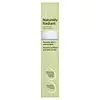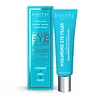What's inside
What's inside
 Key Ingredients
Key Ingredients

 Benefits
Benefits

 Concerns
Concerns

 Ingredients Side-by-side
Ingredients Side-by-side

Water
Skin ConditioningGlycerin
HumectantParaffinum Liquidum
EmollientButyrospermum Parkii Butter
Skin ConditioningOctyldodecanol
EmollientGlyceryl Stearate Se
EmulsifyingDimethicone
EmollientIsohexadecane
EmollientPolyglyceryl-3 Methylglucose Distearate
EmulsifyingBetaine
HumectantStearyl Alcohol
EmollientStearic Acid
CleansingSaccharomyces Cerevisiae Extract
Skin ConditioningRhodiola Rosea Root Extract
EmollientSapindus Mukorossi Fruit Extract
Skin ConditioningCaesalpinia Spinosa Gum
Skin ConditioningActinidia Chinensis Fruit Extract
EmollientNelumbium Speciosum Flower Extract
Skin ConditioningMorus Nigra Leaf Extract
Skin ConditioningTocopheryl Acetate
AntioxidantLecithin
EmollientTocopherol
AntioxidantAscorbyl Palmitate
AntioxidantPentylene Glycol
Skin ConditioningPhenoxyethanol
PreservativeEthylhexylglycerin
Skin ConditioningPotassium Sorbate
PreservativeSodium Benzoate
MaskingCarbomer
Emulsion StabilisingXanthan Gum
Emulsifying2-Bromo-2-Nitropropane-1,3-Diol
PreservativeSodium Hydroxide
BufferingCitric Acid
BufferingDisodium EDTA
Water, Glycerin, Paraffinum Liquidum, Butyrospermum Parkii Butter, Octyldodecanol, Glyceryl Stearate Se, Dimethicone, Isohexadecane, Polyglyceryl-3 Methylglucose Distearate, Betaine, Stearyl Alcohol, Stearic Acid, Saccharomyces Cerevisiae Extract, Rhodiola Rosea Root Extract, Sapindus Mukorossi Fruit Extract, Caesalpinia Spinosa Gum, Actinidia Chinensis Fruit Extract, Nelumbium Speciosum Flower Extract, Morus Nigra Leaf Extract, Tocopheryl Acetate, Lecithin, Tocopherol, Ascorbyl Palmitate, Pentylene Glycol, Phenoxyethanol, Ethylhexylglycerin, Potassium Sorbate, Sodium Benzoate, Carbomer, Xanthan Gum, 2-Bromo-2-Nitropropane-1,3-Diol, Sodium Hydroxide, Citric Acid, Disodium EDTA
Water
Skin ConditioningGlycerin
HumectantCetearyl Alcohol
EmollientCeteareth-20
CleansingCaprylic/Capric Triglyceride
MaskingGlycol Cetearate
EmollientButyrospermum Parkii Butter
Skin ConditioningAloe Barbadensis Leaf Juice
Skin ConditioningSodium Hyaluronate
HumectantPersea Gratissima Oil
Skin ConditioningCamellia Sinensis Leaf Extract
AntimicrobialDiethylamino Hydroxybenzoyl Hexyl Benzoate
UV FilterEthylhexyl Methoxycinnamate
UV AbsorberEthylhexyl Salicylate
UV AbsorberEthylhexyl Triazone
UV AbsorberOctocrylene
UV AbsorberDi-C12-13 Alkyl Malate
EmollientDiisopropyl Adipate
EmollientAmmonium Acryloyldimethyltaurate/Vp Copolymer
Phenoxyethanol
Preservative1,2-Hexanediol
Skin ConditioningCaprylyl Glycol
EmollientCitric Acid
BufferingSodium Benzoate
MaskingPotassium Sorbate
PreservativeBHT
AntioxidantWater, Glycerin, Cetearyl Alcohol, Ceteareth-20, Caprylic/Capric Triglyceride, Glycol Cetearate, Butyrospermum Parkii Butter, Aloe Barbadensis Leaf Juice, Sodium Hyaluronate, Persea Gratissima Oil, Camellia Sinensis Leaf Extract, Diethylamino Hydroxybenzoyl Hexyl Benzoate, Ethylhexyl Methoxycinnamate, Ethylhexyl Salicylate, Ethylhexyl Triazone, Octocrylene, Di-C12-13 Alkyl Malate, Diisopropyl Adipate, Ammonium Acryloyldimethyltaurate/Vp Copolymer, Phenoxyethanol, 1,2-Hexanediol, Caprylyl Glycol, Citric Acid, Sodium Benzoate, Potassium Sorbate, BHT
Ingredients Explained
These ingredients are found in both products.
Ingredients higher up in an ingredient list are typically present in a larger amount.
This ingredient is also known as shea butter. It is an effective skin hydrator and emollient.
Emollients help soothe and soften your skin. It does this by creating a protective film on your skin. This barrier helps trap moisture and keeps your skin hydrated. Emollients may be effective at treating dry or itchy skin.
Shea butter is rich in antioxidants. Antioxidants help fight free-radicals, or molecules that may harm the body. It is also full of fatty acids including stearic acid and linoleic acid. These acids help replenish the skin and keep skin moisturized.
While Shea Butter has an SPF rating of about 3-4, it is not a sunscreen replacement.
Shea butter may not be fungal acne safe. We recommend speaking with a professional if you have any concerns.
Learn more about Butyrospermum Parkii ButterCitric Acid is an alpha hydroxy acid (AHA) naturally found in citrus fruits like oranges, lemons, and limes.
Like other AHAs, citric acid can exfoliate skin by breaking down the bonds that hold dead skin cells together. This helps reveal smoother and brighter skin underneath.
However, this exfoliating effect only happens at high concentrations (20%) which can be hard to find in cosmetic products.
Due to this, citric acid is usually included in small amounts as a pH adjuster. This helps keep products slightly more acidic and compatible with skin's natural pH.
In skincare formulas, citric acid can:
While it can provide some skin benefits, research shows lactic acid and glycolic acid are generally more effective and less irritating exfoliants.
Most citric acid used in skincare today is made by fermenting sugars (usually from molasses). This synthetic version is identical to the natural citrus form but easier to stabilize and use in formulations.
Read more about some other popular AHA's here:
Learn more about Citric AcidGlycerin is already naturally found in your skin. It helps moisturize and protect your skin.
A study from 2016 found glycerin to be more effective as a humectant than AHAs and hyaluronic acid.
As a humectant, it helps the skin stay hydrated by pulling moisture to your skin. The low molecular weight of glycerin allows it to pull moisture into the deeper layers of your skin.
Hydrated skin improves your skin barrier; Your skin barrier helps protect against irritants and bacteria.
Glycerin has also been found to have antimicrobial and antiviral properties. Due to these properties, glycerin is often used in wound and burn treatments.
In cosmetics, glycerin is usually derived from plants such as soybean or palm. However, it can also be sourced from animals, such as tallow or animal fat.
This ingredient is organic, colorless, odorless, and non-toxic.
Glycerin is the name for this ingredient in American English. British English uses Glycerol/Glycerine.
Learn more about GlycerinPhenoxyethanol is a preservative that has germicide, antimicrobial, and aromatic properties. Studies show that phenoxyethanol can prevent microbial growth. By itself, it has a scent that is similar to that of a rose.
It's often used in formulations along with Caprylyl Glycol to preserve the shelf life of products.
Potassium Sorbate is a preservative used to prevent yeast and mold in products. It is commonly found in both cosmetic and food products.
This ingredient comes from potassium salt derived from sorbic acid. Sorbic acid is a natural antibiotic and effective against fungus.
Both potassium sorbate and sorbic acid can be found in baked goods, cheeses, dried meats, dried fruit, ice cream, pickles, wine, yogurt, and more.
You'll often find this ingredient used with other preservatives.
Learn more about Potassium SorbateSodium Benzoate is a preservative. It's used in both cosmetic and food products to inhibit the growth of mold and bacteria. It is typically produced synthetically.
Both the US FDA and EU Health Committee have approved the use of sodium benzoate. In the US, levels of 0.1% (of the total product) are allowed.
Sodium benzoate works as a preservative by inhibiting the growth of bacteria inside of cells. It prevents the cell from fermenting a type of sugar using an enzyme called phosphofructokinase.
It is the salt of benzoic acid. Foods containing sodium benzoate include soda, salad dressings, condiments, fruit juices, wines, and snack foods.
Studies for using ascorbic acid and sodium benzoate in cosmetics are lacking, especially in skincare routines with multiple steps.
We always recommend speaking with a professional, such as a dermatologist, if you have any concerns.
Learn more about Sodium BenzoateWater. It's the most common cosmetic ingredient of all. You'll usually see it at the top of ingredient lists, meaning that it makes up the largest part of the product.
So why is it so popular? Water most often acts as a solvent - this means that it helps dissolve other ingredients into the formulation.
You'll also recognize water as that liquid we all need to stay alive. If you see this, drink a glass of water. Stay hydrated!
Learn more about Water